What to do if my Basler Digital Camera has no power?
- XXavier BerryAug 3, 2025
If your Basler Digital Camera isn't getting power, try replacing the power source.
What to do if my Basler Digital Camera has no power?
If your Basler Digital Camera isn't getting power, try replacing the power source.
What to do if my Basler A202k Digital Camera is not detecting an ExSync signal?
If the Basler Digital Camera isn't detecting an ExSync signal, check the ExSync signal or set the camera for Free run mode.
What does 3 blinks mean on a Basler A202k?
If you aren't supplying an ExSync signal to the Basler Digital Camera, 3 blinks is normal and can be ignored. Otherwise, check the cable and the ExSync generating device.
| Sensor Type | CCD |
|---|---|
| Pixel Size | 7.4 µm x 7.4 µm |
| Dynamic Range | 60 dB |
| Shutter Type | Global Shutter |
| Sensor Size | 1/2" |
| Lens Mount | C-Mount |
| Power Supply | 12 V DC |
| Bit Depth | 8 bit |
| Operating Temperature | 0 to 50 °C |
Details the available camera models, noting the A202k is monochrome.
Lists technical specifications including sensor, pixels, speed, output, power, and dimensions.
Covers operating temperature, humidity, and ventilation guidelines for the camera.
Outlines important safety precautions for power, handling, environment, and cleaning.
Describes the camera's connectors: 26-pin MDR for data/control and 6-pin for power.
Provides details on Camera Link MDR and power cables, including length limits.
Explains the Camera Link transmitter/receiver components and interface schematic.
Details the external sync (ExSync) signal for controlling frame readout and exposure.
Describes camera output signals: pixel clock, frame valid, line valid, and integrate enabled.
Explains serial communication for camera configuration and parameter control via RS-644.
Describes using a converter for older RS-232 style output.
Specifies power requirements: 12 VDC, max 5.5W, and no over-voltage protection.
Details the function of the status LED on the camera's back for power and error indication.
Overview of camera operation, CCD sensor, exposure control, and data readout process.
Explains camera operation via ExSync signal or free-run, detailing exposure modes.
Describes the dual 10-bit and dual 8-bit video data output modes.
Explains the IntEn output signal indicating exposure status, useful for movable systems.
Details gain and offset adjustments for left/right channels to optimize image quality.
Explains digital shift feature to multiply output by 2x, 4x, or 8x, with precautions.
Allows specifying a portion of the CCD array for data transfer, affecting frame rate.
Increases sensitivity by summing adjacent pixels (horizontal, vertical, or full binning).
Enables a horizontal flip of the image data.
Provides built-in test patterns for checking camera functionality and data transmission.
Manages camera settings via Work Set, Factory Set, and User Sets for different configurations.
Describes how to monitor camera status and error conditions via LED and commands.
Guide to using the Windows-based tool for easy camera setting adjustments.
Details issuing commands via RS-644 serial connection using a binary protocol.
Provides camera dimensions and details on M4 mounting holes for precise installation.
Specifies dimensions for C-mount lens adapters.
Specifies dimensions for F-mount lens adapters.
Details the horizontal, vertical, and rotational positioning accuracy of the sensor chip.
Explains how to interpret camera status indications based on the LED blinking pattern.
Troubleshooting chart for diagnosing and resolving issues when no image is displayed.
Troubleshooting chart for diagnosing poor image quality (white, black, noisy, or incorrect exposure).
Troubleshooting guide for issues related to cables and connections between devices.
Troubleshooting chart for diagnosing problems with RS-644 serial communication.
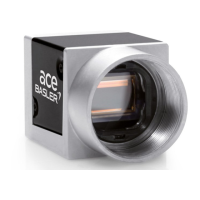
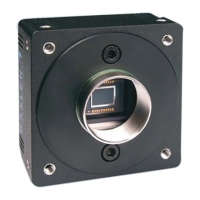

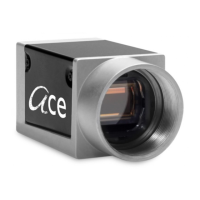

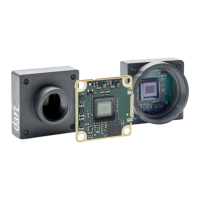

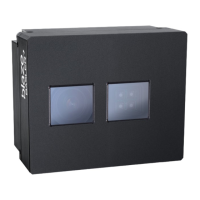
